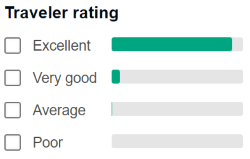When we were living in Argentina I once saw a great Che Guevara t-shirt. Beneath the iconic image of the revolutionary in bold letters are the words “No sé quien era, pero es la moda”; I don’t know who he was, but it’s fashionable.
El Che has become the personification of rebellion and counter-culture, and you can find the world-famous photograph “Guerriero Heroico” printed on everything from posters to bikinis. Guevara no doubt would have despised the rampant consumerism built around his image having passionately pursued communist principles for most of his adult life.
We’ve all seen the photo, some have watched the movie and a few have even got the t-shirt, but how many of the following facts did you know about Ernesto Guevara?
1) Foreign Che Guevara
Despite being instrumental in the Cuban revolution and pressing saint-like status amongst the Cuban population, Mr. Guevara was actually born in Rosario, Argentina. In reference to Che’s “restless” nature, his father declared “the first thing to note is that in my son’s veins flowed the blood of the Irish rebels”, putting him about as far away from Cuban roots as a cup of Starbucks coffee. When you add to the mix that “Che” comes from Argentinian slang meaning ‘pal’ or ‘dude’, you’ll wonder why you ever thought our man was ever Cuban.
2) Wheezy Ché
Far from superhuman status, Guevara suffered from acute episodes of crippling asthma. In childhood, his fits were so frequent and violent that his family was forced to move from the damp coastal climate of San Isidro to the dry mountain region near Cordoba. His problems didn’t stop him from being an athlete, enjoying swimming, soccer, golf, and rugby. His asthma frequently incapacitated him on famous travels, documented in the 2004 film “The Motorcycle Diaries”, and involvement in the active conflicts in Latin America and Africa.
3) Freebie Che
Upon capture in Bolivia, Che was reputed to have shouted, “I am Che Guevara, and I am worth more alive than dead!”
He probably knew something we didn’t, because Albert Korda, the photographer of the classic “Guerrillero Heroico” shot, never made a cent in royalties from his picture. Snapped at a memorial service, Albert was proud of the picture and hung it on his wall where it stayed until an Italian journalist asked if he could have it. Korda obliged, and the journalist dutifully used the image on a poster after Guevara’s death, setting in motion the phenomenal popularity that the photograph would eventually achieve.
4) Sober Che Guevara
Albert Korda actually received $50,000 (which he donated to charity) as a result of a successful lawsuit with a British advertising agency who used Guevara’s image to sell their vodka. He presumably saw this as the last straw following 40 years of happy-go-lucky abuse of his image because El Che was a teetotaler; despite famously chugging on cigars for most of his life, he never touched a drink.
5) No-votes Che
Before we get all frothy about revolutionary spirit and the romance of rebellion, let’s not forget that if we knew the full story about life under Guevara’s administration, we probably wouldn’t be voting him into the following term in office; during his tenure as Minister of Industry Cuba was forced to begin food rationing.
Don’t expect much in the way of kissing babies and soft policies from Candidate Che either; he stood out from his peers fighting Castro’s cause in Cuba and was quickly promoted to comandante, where he enforced a zero-tolerance policy toward deserters by sending execution squads to hunt them down. This was just a warm-up for Guevara, and when he got into power he was appointed head of La Cabaña, a court in which he played judge, jury, and executioner to purge Cuba of loyalists of the previous administration. Historians estimate that he did away with as many as 2000 people, and his activities earned him the cheery name of The Butcher of La Cabaña.
Love him or hate him, Ernesto Che Guevara’s face isn’t going anywhere; he’ll be around on merchandise for a few years yet. It’s always difficult to form opinions about a man how became famous as an image, a ghost associated with whatever people wanted to use him for, but hopefully, these facts will have blown away a bit of the Cuban cigar smoke.


